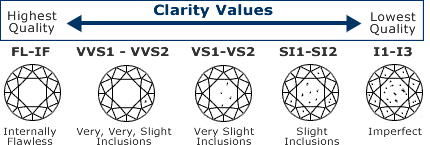1) Lab Grown Diamonds are chemically, physically and optically exactly the same as mined diamonds.
2) The only difference between Lab Grown Diamonds and mined diamonds is the point of origin.Mined Diamonds are formed inside the earth’s surface,while Lab Grown Diamonds are created in the laboratory.
3)Lab Created Diamonds are ecofriendly and contribute to green enviornments.
4)Lab grown diamonds are created without harming native communities,hence they are conflict free.
5)Lab created Diamonds are available in variety of colours.
6)Lab Made Diamonds are 20-30% cheaper than mined diamonds.
7)As they are grown inside the laboratory they are unlimited in sipply.
8)Scientists and gemologists can accurately replicate the exact qualities of mined diamonds.
9)They are available in different cuts,sizes,colour and shapes.
10)Lab Grown Diamonds are not fake.They are diamonds grown from a diamond seed.
11)They are a revolution in the diamond industry.They have many advantages over mined diamonds.
12)The global demand for Lab created diamonds is increasing especially in countries like United States,United Kingdom,India.
13)All Lab Grown Diamonds are graded as per same parameters and specifications as mined diamonds.
14)It is virtually impossible for the naked eye to tell the difference between lab grown and mined diamonds.
15)HPHT(High Pressure High Temperature) and CVD(Chemical Vapor Deposition) is used for growing lab created diamonds.;
2) The only difference between Lab Grown Diamonds and mined diamonds is the point of origin.Mined Diamonds are formed inside the earth’s surface,while Lab Grown Diamonds are created in the laboratory.
3)Lab Created Diamonds are ecofriendly and contribute to green enviornments.
4)Lab grown diamonds are created without harming native communities,hence they are conflict free.
5)Lab created Diamonds are available in variety of colours.
6)Lab Made Diamonds are 20-30% cheaper than mined diamonds.
7)As they are grown inside the laboratory they are unlimited in sipply.
8)Scientists and gemologists can accurately replicate the exact qualities of mined diamonds.
9)They are available in different cuts,sizes,colour and shapes.
10)Lab Grown Diamonds are not fake.They are diamonds grown from a diamond seed.
11)They are a revolution in the diamond industry.They have many advantages over mined diamonds.
12)The global demand for Lab created diamonds is increasing especially in countries like United States,United Kingdom,India.
13)All Lab Grown Diamonds are graded as per same parameters and specifications as mined diamonds.
14)It is virtually impossible for the naked eye to tell the difference between lab grown and mined diamonds.
15)HPHT(High Pressure High Temperature) and CVD(Chemical Vapor Deposition) is used for growing lab created diamonds.;


